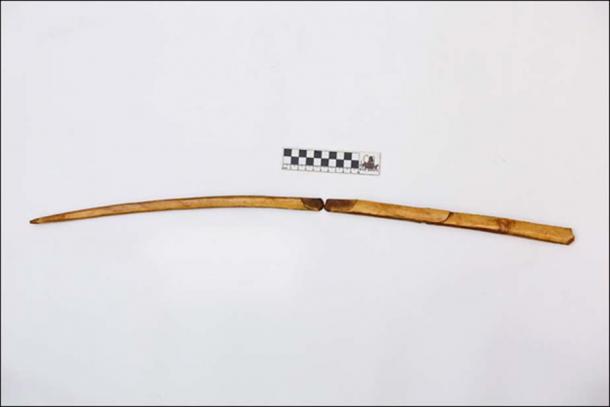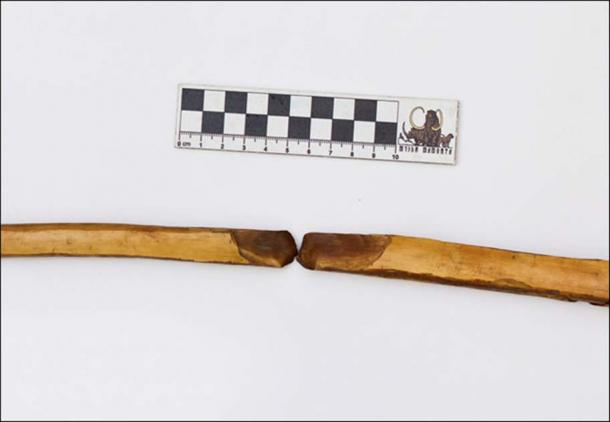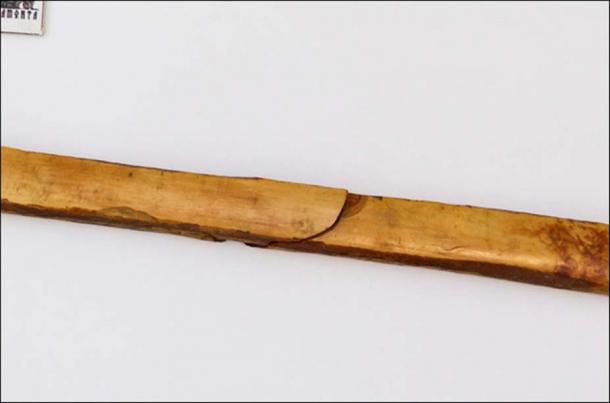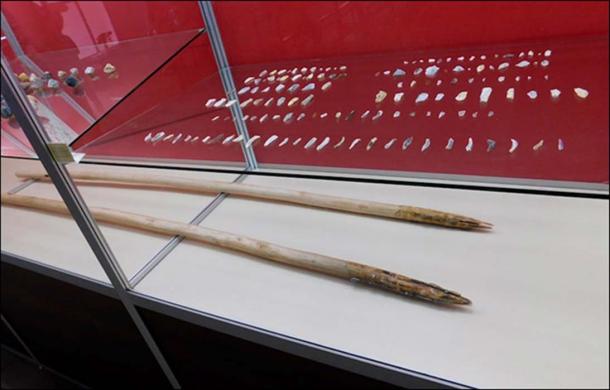
Is This Proof Early Man Weaponized Ivory from Woolly Mammoth Tusks to Kill...Woolly Mammoths?
By The Siberian Times reporter
Deadly paleolithic spears - pictured below and manufactured from the ivory from extinct beasts - show the lethal genius of ancient craftsmen up to 28,500 years ago.
These deadly spear tips were all found in inhospitable Arctic areas of Yakutia, two made by Stone Age man from the tusks of woolly mammoths, the other hewn from the horn of a long-gone hairy Siberian rhinoceros.

Three deadly spears. Picture: Michil Yakovlev
Of the three, special interest currently surrounds the front end of a lance or javelin dating back 10,000 to 12,000 years ago, says Dr Semyon Grigoryev, Director of the Lazarev Mammoth Museum at Northeastern Federal University.
This weapon was found in the tundra close to the Syalakh River 'inside the ribs' of 'adult mammoth bones', he revealed.
- Did Man and Mammoth Ever Live in Harmony? Not Quite…
- The smoking gun 'proving ancient man killed woolly mammoth 45,000 years ago'



This weapon dated as 28,500 years old seems to have been a collapsible weapon for Arctic dwellers of the time. Pictures: Michil Yakovlev
It was dug last year from 'a known permafrost layer, which suggests it originates from the Upper Paleolithic time period'.
In other words, the mammoth tusk spear appears to have been used in an ambush attack by ancient man on a woolly mammoth at the time the creatures were veering towards obliteration.
The beast probably lumbered on but eventually expired with the spear still piercing its rib cage, to be found by modern-day tusk hunters.


This weapon, dated between 12,000 and 10,000 years ago, was found in the tundra close to the Syalakh River 'inside the ribs' of 'adult mammoth bones'. Pictures: Michil Yakovlev
'These weapons could have been used in a mammoth hunt,' acknowledges Dr Grigoryev.
'For now, we can only speculate that this mammoth was injured by the spear.
'Then it managed to escape, with the broken spear inside, and died somewhere.'
He made clear: 'We are now undertaking radiocarbon dating for the spear tip and for the bones of mammoth.
'If the dates are close, we can propose they are indeed related.'
- The Last of the Siberian Unicorns: What Happened to the Mammoth-Sized One-Horned Beasts of Legend?
- Initial Stage Reached on Dream of Cloning Woolly Mammoth


The spear tip, almost 90cm in length and seemingly still sharp enough to kill. Picture: The Siberian Times
The length of the slim prehistoric spear tip is 36.5 centimetres, but it was originally longer.
At the point where it had snapped - possibly soon after striking the mammoth - it was 1.03 cm thick.
The surface of the spear had been 'entirely polished' by its human owner and had an 'excellent finish', without ornaments.
The weapon would have been fitted with microliths - tiny deadly sharp stones such as flint or quartz 'sharpened to kill'.
'What seems amazing for me is the skill of ancient master, who made this spear,' he said.

'The grooves for the microliths are so nicely crafted, as if with some mechanic tool. Picture: Michil Yakovlev
'The grooves for the microliths are so nicely crafted, as if with some mechanic tool.
'Archaeologists say it was some stone implement.'
The next 'spear or javelin' is more than twice as old, also made of mammoth ivory, possibly made 28,500 years ago and found at the famous Yana site.
This seems to have been a collapsible weapon for Arctic dwellers of the time.


Yana site destroyed by mammoth tusk hunters and climate change. Picture: Andrey Shubenki
It is a 'fragmented rod with a sharp pointed tip made of mammoth ivory', wrote Dr Grigoryev in an academic paper on the spears, all now held by the mammoth museum at the Institute of Applied Ecology of the North at the North-Eastern Federal University, Yakutsk.
It comprises 'three large parts with an overall length of 73 cm.
'The length of the largest fragment... is 39.9 cm.
'The second and third fragments are 16.6 cm and 20.1 cm respectively.'

A weapon with the tip with microliths. Picture: Antropogenez.ru
These three parts of the weapon 'match but cannot be joined with the first fragment due to a missing piece'.
The cross-section of the tip is round with a maximum diameter of 2.2 cm.
'The sharp pointed tip is made of the outer layers of the tusk, as evidenced by the polished outer surface of the tusk exhibiting a yellow colour, preserved on the tip.'


Reconstruction of Sungir man with mammoth tusk spear made by Roman Yevseev for Antropogenez.ru. A mammoth tusk spear with microliths found in Kostenki, via drive2.ru
Dating to around 13,300 years ago, the final - and 'unprecedented' - spear shown here was made from woolly rhino horn and discovered in 2013 in the northern part of the Great Lyakhov Island, the largest of the New Siberian group, between the Laptev and East Siberian seas. A story on its discovery is here: 13,300 year old spear made of woolly rhinoceros horn found on Arctic island.
'The artifact was made from the horn of a woolly rhinoceros (Coelodonta antiquitatis) and represents a 83.2 cm long rod-shaped spear tip,' said Dr Grigoryev.
It is also 'the world's northernmost discovery of a Paleolithic tool'.
- A Mammoth-Sized Find: Humans Living in the Arctic 10,000 Years Earlier May Push Back Other Important Migration Dates Too
- Neanderthals cleared of herding mammoth over cliff edge

Semyon Grigoryev, Director of the Lazarev Mammoth Museum at Northeastern Federal University. Picture: The Siberian Times
Indeed, it proved paleolithic man hunted hundreds of kilometres further north than previously understood.
'The cone shaped spearhead's lenticular-section is at about 2 cm in diameter and is partially longitudinally fragmented.
'The tip width gradually expands in the middle the blade and decreases towards the neck, which is a narrowed flat petiole.
'Such a massive spear head, manufactured from the horn of a woolly rhinoceros, is unprecedented.'
The three weapons were introduced recently to a scientific audience in Taiwan.
Top Image: Reconstruction of Sungir man with mammoth tusk spear. Source: Roman Yevseev for Antropogenez.ru
The article ‘Is this proof early man weaponized ivory from woolly mammoth tusks to kill...woolly mammoths?’ originally appeared on The Siberian Times and has been republished with permission.















